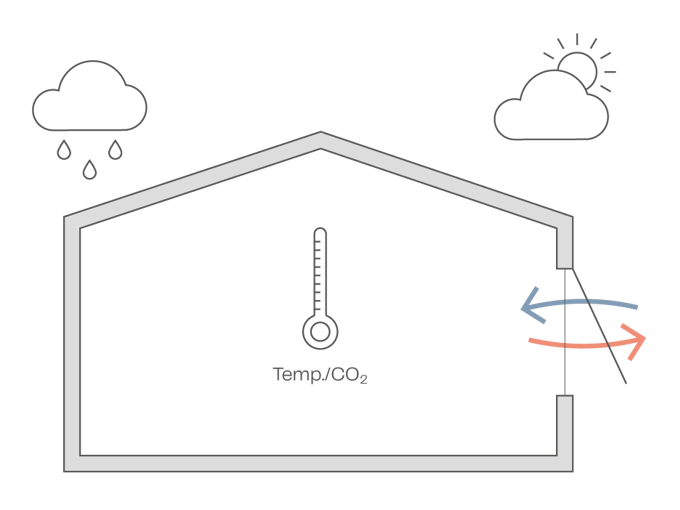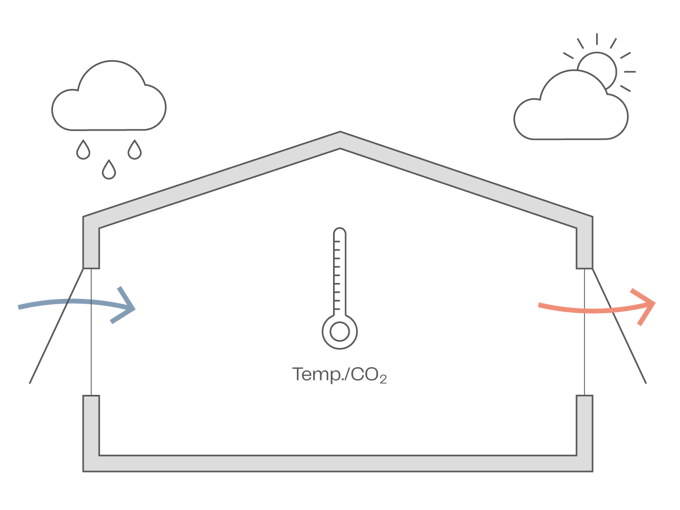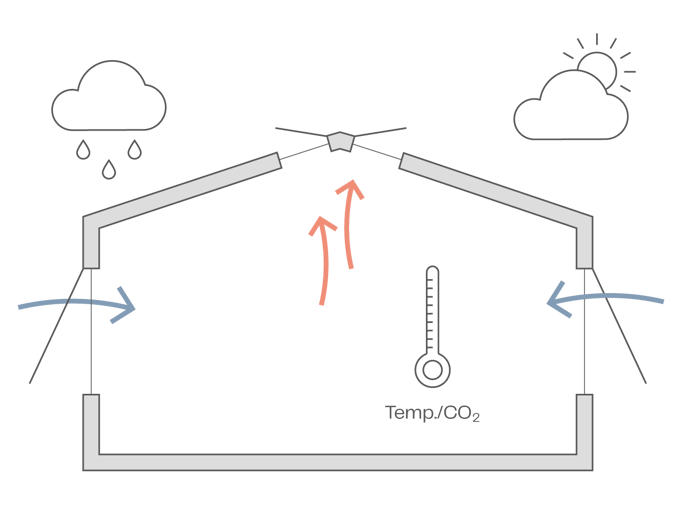Natural ventilation strategies
When it comes to natural ventilation in buildings, there are several strategies that can be employed to ensure optimal airflow and comfort. One effective approach is the use of ventilated windows, which provide a means for fresh air to enter and stale air to exit a space. WindowMaster, a leading expert in natural ventilation and mixed-mode ventilation, can assist you in selecting the most suitable strategy for your specific project. With our solutions, you can achieve a well-ventilated and comfortable indoor environment that promotes energy efficiency and enhances occupant well-being.
Read more about natural ventilationHow to find the right ventilation strategy
When it comes to finding the right ventilation strategy for a building, it is important to consider the various options available. One such option is natural ventilation, which can be implemented in different forms depending on factors such as the building's design, internal thermal loads, and the positioning of openings – which are typically windows.
Natural ventilation takes advantage of the natural airflow and wind patterns to provide fresh air and remove stale air, promoting a healthier indoor environment. By strategically placing windows and designing the building to facilitate airflow, natural ventilation can effectively regulate temperature and improve air quality while reducing the reliance on mechanical ventilation systems. Therefore, understanding the specific requirements and characteristics of the building is crucial in determining the most suitable natural ventilation strategy.
At WindowMaster, we focus on the following natural ventilation strategies:
Single-sided ventilation
Single-side ventilation is available when there are windows on only one side of the room. This is typically seen in offices. During the winter months, where the surrounding air is often cold, windows cannot be opened for longer periods of time. However, pulse ventilation can be used to overcome this problem. This allows the windows to be opened for just a short period of time as it ensures that the air in the room is replaced quickly. Because cold air creates draughts even at very low wind speeds, the windows are quickly closed again after a set period of time. High wind speeds and low outdoor temperatures further limit the amount of time that the windows are open.

Cross ventilation
Cross ventilation is achieved using windows on both sides of the room, creating a current of air across the room. If the windows on both sides of the room are open, the overpressure on the side of the building facing into the wind and/or low pressure on the opposite, sheltered side will create a current of air through the room from the exposed side to the sheltered side. To ensure optimal airflow with as few drafts as possible, the windows on the side of the building that is facing the wind are not opened as much as the windows on the sheltered side.

Stack ventilation
Stack ventilation creates a stack effect that arises as a consequence of temperature differences. Warm air rises because it is less dense than cold air. When warm air rises to the roof of a building, it creates a slight vacuum in the building's lower levels, which in turn pulls fresh air in through windows on the ground floor. This creates a natural airflow. However, the physical process depends on the height difference between the windows that let outdoor air in and the windows that exhaust 'used' air out. Windows in the roof let the 'used' air escape, while the windows in the lower levels let fresh air into the building. In the illustration, the stack effect is combined with the wind direction. Wind direction determines which windows let air in, and which windows exhaust air from the building. The ground-floor windows on the sheltered side are opened more than the windows on the wind-exposed side, whereas only the windows on the sheltered side of the roof are opened.


